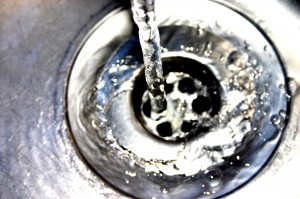Wasted Water is Money Down the Drain
 Conserving water is a fantastic habit to get into to because it saves water and reduces waste-water treatment costs. Conserving hot water can even save you money on your Colorado Springs heating and cooling bills.
Conserving water is a fantastic habit to get into to because it saves water and reduces waste-water treatment costs. Conserving hot water can even save you money on your Colorado Springs heating and cooling bills.
Let us start by explaining how conserving water can result in potential cost savings. Basically it’s a simple process in which all the water that drains away from showers, sinks and toilets ends up in the sewage treatment plant. The more water that the sewage plant has to process, the higher the costs are. So the more water generated by a toilet flush, the brushing of your teeth, washing of your hands, showering, etc., the more waste water ends up at the sewage treatment plant. If you could reduce the amount of water being generated, by perhaps having a 3.5 gallon toilet installed instead of a 5 or 7 gallon toilet or even just using water efficient fixtures installed, you could cut down on the costs of treating the water.
When trying to conserve water, the water meter is your best friend. If you are on a public Colorado Springs water system, it should be easy to find your water meter because it will be located either on your property or very close to it. The water meter will tell you how much water you are using and it can help you detect leaks. To read a water meter you need to take the second reading and subtract the first reading from it. The answer will equal how many cubic feet of water you have used. Keep in mind; there are 7.5 gallons of water in one cubic foot of water. It should also help to know that a family of four uses about 1500 gallons of water per day maintaining an average Colorado Springs household and a garden.
Water meters can also be used to detect leaks. All you have to do is turn off every plumbing fixture in your house for a couple of hours and take a meter reading. If the reading changes, a leak exists. Keep in mind; you mustn’t forget to shut off the built-in icemaker or the reverse osmosis water filtration system because they turn themselves on automatically.
Bathrooms are the rooms that use the most amount of water. On estimate, toilet use adds up to about 40% of your water use. If you are looking to conserve water you should definitely use a 3.5 or 1.6 gallons per flush toilet. Simply converting from a 7 gallon toilet to a 1.6 gallon toilet can reduce your overall water use by 25% or more. Furthermore, a leaky toilet will waste 50 gallons of water or more per day regardless of the size.
If you think your toilet might have a leak, there is an easy way to find out for sure. It’s called the food coloring test! Simply place a few drops of food coloring into the tank and allow the toilet to go unused for about15-20 minutes. When you return to your toilet you should check to see if the water in the toilet bowl has a tint of the food coloring in it. If so, you are the lucky winner of a toilet leak. The leak is usually the result of loose fittings or worn washers. Try installing a new washer or tightening the fittings. If that doesn’t work, have your Colorado Springs plumber fix the problem right away.
Another way to conserve water is to install low-flow water fixtures. These are especially useful for shower heads. Traditional shower heads allow a flow of seven gallons per minute which for a five-minute shower equals to 35 gallons of water. By switching to a low-flow shower head, using 3.5 gallons per minute, you can reduce the water used in a shower by half. Also, if you are using less hot water, it will reveal itself each month when you get your Colorado Springs gas and electric bill.
Lastly, you can conserve water by keeping an eye on the kitchen and laundry situations. Dishwashers and clothes washers use 17 to 35 gallons of water per load so it would be a good idea to run full loads at all times. Also, during the summer, you might want to watch how careless you are with your outdoor water use. Simply washing an automobile can use 100 gallons of water and watering the grass can add up to even more.










